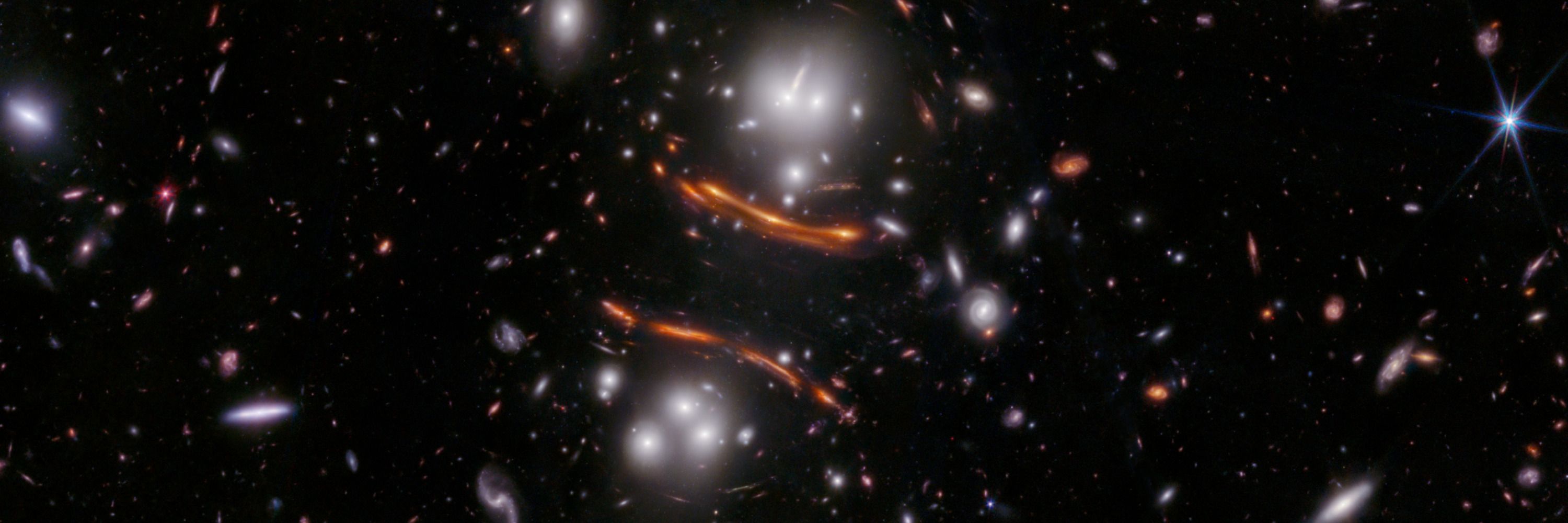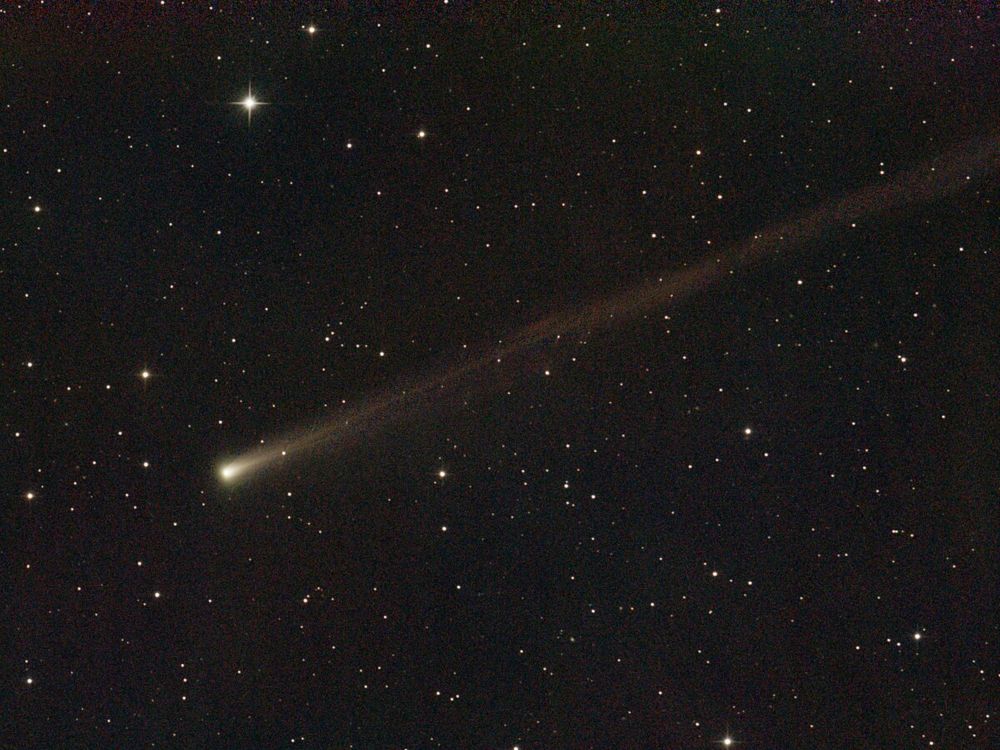
It shows 24 hours of Earth's rotation, with the camera locked to the sky instead of the ground. We're all hanging out on this spinning rock.
Brilliant work by Bartosz Wojczyński. 🧪
artuniverse.eu/gallery/1907...
If you were struck by a microscopic black hole, the mass of a small asteroid, it'd be no worse than a gunshot. And such black holes are definitely too rare to have "any observable effects on the human population." 🔭🧪
www.sciencealert.com/what-if-a-ti...

If you were struck by a microscopic black hole, the mass of a small asteroid, it'd be no worse than a gunshot. And such black holes are definitely too rare to have "any observable effects on the human population." 🔭🧪
www.sciencealert.com/what-if-a-ti...
We can't see it from 🌍, but the
Extreme Ultraviolet Imager (EUVI), an instrument of the NASA STEREO mission that examines the sun, take a video in the spring👍
It seems Theia was a neighbor from the inner solar system--possibly forming right alongside Earth. 🧪🔭
www.mps.mpg.de/theia-and-ea...

It seems Theia was a neighbor from the inner solar system--possibly forming right alongside Earth. 🧪🔭
www.mps.mpg.de/theia-and-ea...
We know there's something missing from that model, but figuring out *what* is not easy! 🧪🔭
news.uchicago.edu/story/scient...

We know there's something missing from that model, but figuring out *what* is not easy! 🧪🔭
news.uchicago.edu/story/scient...
Dinosaurs lived on the other side the Galaxy.
Dinosaurs lived on the other side the Galaxy.
By studying relationships between distant objects, astronomers have reconstructed our solar system's early upbringing. Their conclusion: The Sun left its birthplace early, before its siblings could stir up much trouble. 🧪🔭
aasnova.org/2025/11/14/t...
![The Hubble Space Telescope’s view of a collection of young stars still embedded within their natal nebula. [NASA, ESA, G. Duchene]](https://cdn.bsky.app/img/feed_thumbnail/plain/did:plc:yiht2spe2sqm23m3iowdlhgz/bafkreif3a4zdlxhr4bjcqog3yfibo4jlhzezzjkmx3xuwivhzq35s3zs3m@jpeg)
By studying relationships between distant objects, astronomers have reconstructed our solar system's early upbringing. Their conclusion: The Sun left its birthplace early, before its siblings could stir up much trouble. 🧪🔭
aasnova.org/2025/11/14/t...
They tell us that galaxies grew up a lot faster than we thought. We don't know how--but new observations offer clues. 🧪🔭
esawebb.org/news/weic2522/

They tell us that galaxies grew up a lot faster than we thought. We don't know how--but new observations offer clues. 🧪🔭
esawebb.org/news/weic2522/
(It's actually two dying stars circling each other, casting out shells of dust. Which is a pretty cool image, too.) 🧪🔭
science.nasa.gov/missions/web...

(It's actually two dying stars circling each other, casting out shells of dust. Which is a pretty cool image, too.) 🧪🔭
science.nasa.gov/missions/web...
science.nasa.gov/solar-system...


science.nasa.gov/solar-system...
flic.kr/p/2rGnEUB
flic.kr/p/2rGmsw9


flic.kr/p/2rGnEUB
flic.kr/p/2rGmsw9
A nearby cubesat captured these remarkable images of the asteroid immediately after the impact. 🧪🔭
aasnova.org/2025/11/03/s...
A nearby cubesat captured these remarkable images of the asteroid immediately after the impact. 🧪🔭
aasnova.org/2025/11/03/s...
A new geophysical models shows that the breakup of an ancient super-continent called Nuna may created the conditions that led to the first complex living cells. 🧪🔭
www.sydney.edu.au/news-opinion...
A new geophysical models shows that the breakup of an ancient super-continent called Nuna may created the conditions that led to the first complex living cells. 🧪🔭
www.sydney.edu.au/news-opinion...
www.washingtonpost.com/nation/2025/...

www.washingtonpost.com/nation/2025/...
On the right you can also see galaxy NGC 4691. There should be a lot more pictures coming in soon. 🧪🔭
www.facebook.com/groups/22700...

On the right you can also see galaxy NGC 4691. There should be a lot more pictures coming in soon. 🧪🔭
www.facebook.com/groups/22700...
This likely lunar impact flash appeared today. Like a space firefly. 🧪
This likely lunar impact flash appeared today. Like a space firefly. 🧪
skyandtelescope.org/astronomy-ne...

skyandtelescope.org/astronomy-ne...
www.esa.int/Space_Safety...
www.esa.int/Space_Safety...
en.wikipedia.org/wiki/C/2025_...
Last I checked 3I/Atlas was still in one piece - and still not a spaceship :)

www.virtualtelescope.eu/2025/11/13/c...

www.virtualtelescope.eu/2025/11/13/c...
This shot, by Michael Buechner and Frank Niebling, shows an intriguing anti-tail and a "smoking" tail. 🧪🔭
britastro.org/observations...

This shot, by Michael Buechner and Frank Niebling, shows an intriguing anti-tail and a "smoking" tail. 🧪🔭
britastro.org/observations...
The Dresden Codex, one of the few surviving Mayan manuscripts, contains tables that give highly accurate timings of solar eclipses over more than 700 years, from 350 CE to the 12 century. 🧪🔭
www.science.org/doi/10.1126/...

The Dresden Codex, one of the few surviving Mayan manuscripts, contains tables that give highly accurate timings of solar eclipses over more than 700 years, from 350 CE to the 12 century. 🧪🔭
www.science.org/doi/10.1126/...
Fascinating to see his note summarizing the key topics he planned to discuss during his 1977 meeting with President Carter. ("Wonder"!) 🧪🔭
www.loc.gov/collections/...


Fascinating to see his note summarizing the key topics he planned to discuss during his 1977 meeting with President Carter. ("Wonder"!) 🧪🔭
www.loc.gov/collections/...
It's a new image created by the Murchison Widefield Array, which scanned the sky in 20 radio "colors" over frequencies from 72 to 231 megahertz. 🧪🔭
www.icrar.org/gleam-x-gala...

It's a new image created by the Murchison Widefield Array, which scanned the sky in 20 radio "colors" over frequencies from 72 to 231 megahertz. 🧪🔭
www.icrar.org/gleam-x-gala...
No matter how bad things get here, we live on the best of all possible worlds. 🔭🧪
arxiv.org/abs/2509.04558

No matter how bad things get here, we live on the best of all possible worlds. 🔭🧪
arxiv.org/abs/2509.04558
The planet is covered with odd gullies that look like they were carved by running water. A cool new experiment demonstrates that they were probably carved by sliding, spitting chunks of dry ice. (Sorry, still no signs of life.) 🧪🔭
www.uu.nl/en/news/myst...
The planet is covered with odd gullies that look like they were carved by running water. A cool new experiment demonstrates that they were probably carved by sliding, spitting chunks of dry ice. (Sorry, still no signs of life.) 🧪🔭
www.uu.nl/en/news/myst...

